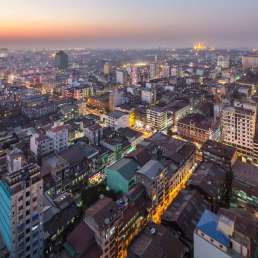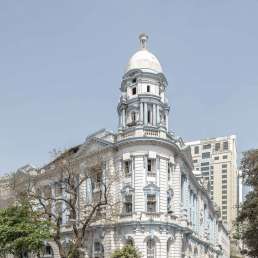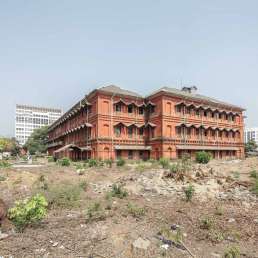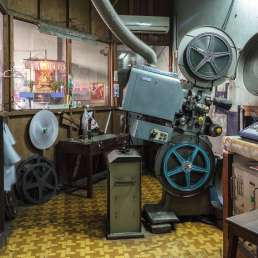Address: 668 Mahabandoola Road
Year built: 1823
Architect: Unknown
The Guangdong Guanyin Temple traces its origins back to the early 19th century, when Chinese immigrants from Canton (modern-day Guangzhou) settled in Lower Burma together with those from Fukien (Fujian). The latter founded the nearby Kheng Hock Keong Temple.
Officially, ethnic Chinese citizens of Myanmar account for 3 per cent of the population, although the true figure may be substantially higher. There are 150,000 in Yangon alone, settling traditionally in Chinatown, here in Latha township, where Chinese restaurants, shops and bookstores abound.
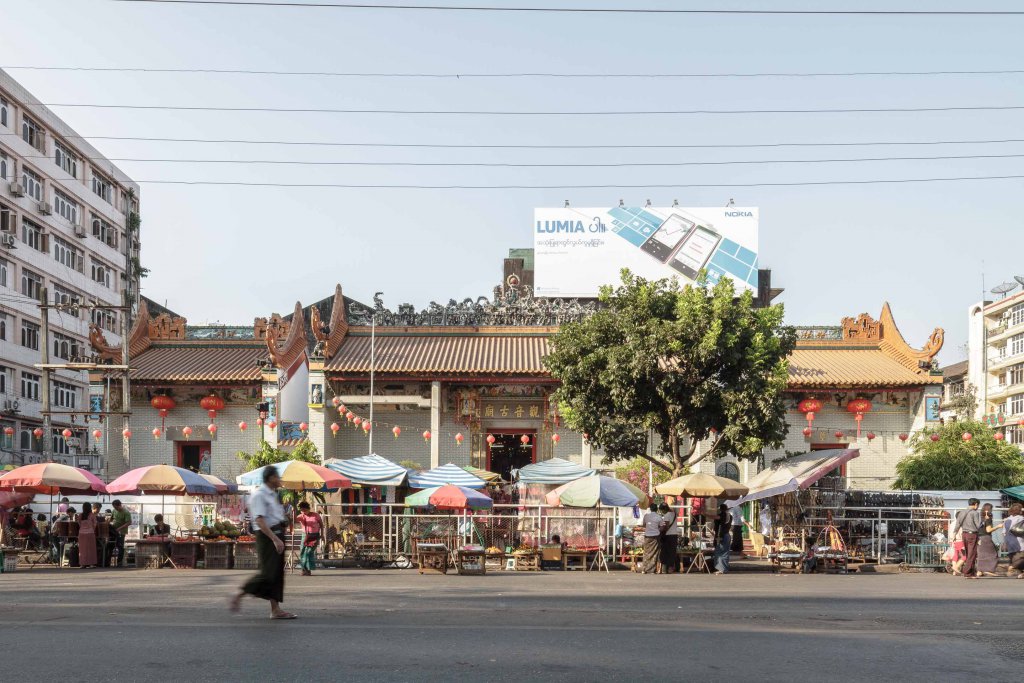
The temple is dedicated to Guanyin, the bodhisattva (enlightened being) of compassion venerated by East Asian Buddhists. It has long been a cultural hub for the ethnic Chinese community and the area outside the temple always teems with vendors. As the local Irrawaddy magazine puts it vividly:
“Every afternoon, hawkers with garlic-fried chilli crabs, steamed dim sum and straw baskets full of strawberries set up their shop around the Guanyin temple, bracing themselves for the onrush of evening strollers. (…) By the time the sidewalk spills into the street, the butcher at Good Diamond Sausages has sold out his daily output of pork sausages he says are made according to a recipe brought over from Guangdong in the 1940s. ‘They’re just a bit less sweet than in Hong Kong,’ he says.”
Every conventional guidebook will also—rightly—tell you to have an evening meal on the rows of plastic tables and stools on 19th Street, though it’s becoming more touristy by the minute. Burmese friends of this book also recommend the rice congee with fish on 20th Street, beside the temple, together with a stick of fried dough (Ei Kyae Kwe)—sure to attract fewer tourists and reportedly a local institution!
Built in 1823, this temple caught fire in 1855 along with valuable records of its early history. It reopened 13 years later, in 1868. At that point a stele commemorating the names of the donors was installed—ostensibly the earliest record of the temple’s existence in the city.
Its layout differs significantly from the nearby Kheng Hock Keong Temple: it makes less use of its front courtyard and is more open to the road, with street vendors’ stalls coming right up to the front steps.
The gilded inscribed boards refer to Guanyin. Several rows of altars featuring incense bowls lead to Guanyin’s shrine. Note the stunningly detailed scenes depicted on the altars themselves, as well as the golden carvings surrounding Guanyin. Smaller altars in the hall commemorate other bodhisattvas including Maitreya who, according to Buddhist belief, will appear on Earth in the future and attain complete enlightenment.

